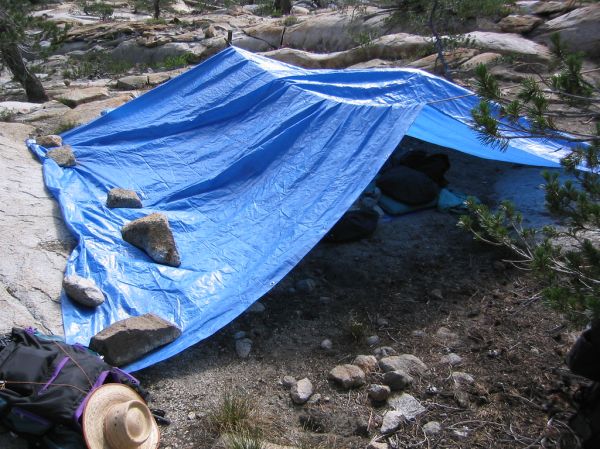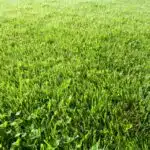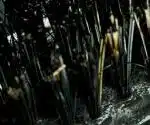Maintaining the cleanliness of your tent is essential not only for aesthetic reasons but also for health and safety concerns. A dirty tent can attract pests, develop mold and mildew, and compromise its waterproofing ability. As a tent cleaning expert, my knowledge and experience have taught me that proper cleaning techniques can prolong the lifespan of your tent and enhance your camping experience.
Cleaning a tent may seem like a daunting task, but it is worth the effort to keep it in top condition. In this article, I will provide you with practical tips on how to clean different types of tents using the appropriate tools and solutions. From removing stubborn stains to preventing damage during washing, I will guide you through the process step by step. By following my advice, you can ensure that your tent remains spotless and safe for future adventures.
Preparing Your Tent For Cleaning
Cleaning a tent is like taking care of a living organism. Just like how you assess the durability and check for damage in your own body before performing any procedures, it is crucial to assess the same things in your tent before cleaning it. This will not only ensure that your tent remains in good condition but also prolong its lifespan.
Assessing durability includes checking the overall structure of your tent. Make sure that all poles and stakes are intact and functional. You can do this by setting up your tent and inspecting each piece carefully. Look for any cracks, bends, or breaks that could indicate weakness or vulnerability to damage. Similarly, checking for damage involves examining the fabric of your tent. Look for holes, tears, or punctures that could compromise the integrity of your shelter.
Once you have assessed the durability and checked for damage, it’s time to prepare your tent for cleaning. Start by removing any loose debris such as dirt, leaves, or twigs from both the interior and exterior surfaces of your tent. Use a soft-bristled brush or a vacuum cleaner with a brush attachment to gently remove these particles without damaging the fabric. This will make it easier to clean your tent thoroughly and prevent any further damage during the process. Next, take note of what type of fabric your tent is made from so you can choose an appropriate cleaning solution.
Assessing The Type Of Fabric
Assessing Fabric Type is the first step in cleaning your tent. It is important to determine the type of fabric used in the tent to avoid damage during cleaning. Most tents are made of either polyester, nylon, or canvas materials, with each having different cleaning requirements. Polyester and nylon fabrics are lightweight and easy to clean, while canvas is heavy-duty and requires special care.
Choosing Cleaning Solutions is the next step in cleaning your tent. After determining the fabric type of your tent, you need to choose a cleaning solution that suits it. Some fabrics require mild detergent solutions, while others may need specialized cleaners designed for outdoor fabrics. It is important to read the manufacturer’s instructions before using any cleaning solution on your tent.
Cleaning your tent can be a challenging task if you don’t have adequate knowledge about its fabric type and proper cleaning solutions. Assessing Fabric Type and Choosing Cleaning Solutions are crucial steps in ensuring that your tent stays in good condition after every use. In the next section, we will discuss gathering the necessary tools and supplies needed for a successful tent-cleaning session.
Gathering The Necessary Tools And Supplies
After assessing the type of fabric of your tent, it is time to gather the necessary tools and supplies for cleaning. But before we delve into that, let’s first talk about why keeping your tent clean is important. A clean tent not only looks better but also lasts longer. Dirt and debris can weaken the fabric and cause premature wear and tear. Additionally, a dirty tent can attract insects and critters which may damage it further.
Now that you understand the importance of cleaning your tent, let’s move on to the essential equipment you will need. Firstly, a soft-bristled brush or sponge will be useful for removing loose dirt and debris from both the inside and outside of the tent. Next, a mild soap or detergent that is suitable for use on nylon or polyester fabrics should be used with cold water to avoid shrinking or damaging the material. Lastly, you will need a large enough space to set up the tent for cleaning purposes.
Once you have gathered all of your necessary equipment, it’s time to start preparing your DIY cleaning solutions. For general cleaning purposes, a mixture of mild dish soap and cold water should suffice. However, if you need to remove stubborn stains such as sap or bird droppings, then a solution consisting of equal parts vinegar and water can be used instead. Be sure to test any solution on an inconspicuous area first to make sure there are no adverse effects on your tent.
In summary, before diving into cleaning your tent with DIY solutions it is essential that you have all necessary equipment in place such as soft-bristled brushes/sponges, mild soaps/detergents for nylon/polyester fabrics along with sufficient space to set-up the tent while cleaning it. Once ready with these items one can go ahead in preparing DIY cleaning solutions using mild dish soap/cold water for general purpose while equal parts vinegar/water solution should be used in case stubborn stains such as sap or bird droppings need to be removed. With the right equipment and solutions, your tent will be looking as good as new in no time!
Removing Loose Dirt And Debris
Vacuuming is an effective way to remove loose dirt and debris from a tent. Brushes, brooms, and dustpans can also be used to sweep away dirt and dust. Damp cloths, sponges, and wipes can be used to wipe away surface dirt and grime. Compressed air, soap and water, vinegar and water, cornstarch, baking soda, dryer sheets, rubbing alcohol, and WD-40 can also be used to clean a tent.
Vacuuming
One of the most effective methods for removing loose dirt and debris from a tent is by using vacuuming techniques. Vacuuming is an essential part of maintaining the cleanliness and longevity of your tent. It is a simple yet powerful method that can remove even the smallest particles from your tent’s surface.
To properly vacuum your tent, you first need to ensure that it is completely dry. Once dry, use a soft-bristled brush attachment on your vacuum to gently remove any loose dirt and debris from the surface of the tent. Be sure to pay close attention to seams and corners where dirt tends to accumulate.
It is recommended that you incorporate vacuuming into your regular maintenance schedule for your tent. Depending on how often you use your tent, it may be necessary to vacuum after every use or at least once a month. By doing so, you can prevent the buildup of dirt and debris which can lead to damage over time. With proper care, your tent will last for many years, providing you with countless adventures and memories along the way.
Brushes
When it comes to removing loose dirt and debris from your tent, using the right brush can make all the difference. There are several types of brushes that you can use for cleaning your tent, including soft-bristled brushes, nylon brushes, and microfiber brushes. Soft-bristled brushes are ideal for gently removing dirt and debris from the surface of your tent without causing any damage. Nylon brushes are more durable and can be used for tougher spots or stains. Microfiber brushes are great for cleaning delicate fabrics such as silk or polyester.
To properly store your tent brushes, it is important to keep them in a dry and clean place. Make sure that they are completely dry before storing them away to prevent mold or mildew from forming. You may also want to label each brush with its intended use so that you don’t accidentally use a brush meant for tough stains on delicate fabric.
Incorporating the right type of brush into your regular maintenance schedule is crucial for keeping your tent in good condition. Depending on how often you use your tent, it may be necessary to clean it after every use or at least once a month. By doing so, you can prevent the buildup of dirt and debris which can lead to damage over time. With proper care, your tent will last for many years and provide you with countless adventures along the way.
Spot Cleaning Stubborn Stains
As mentioned earlier, it is crucial to tackle stains as soon as possible. However, some stains may be stubborn and require extra attention. One of the most common types of stubborn stains found on tents is mildew. Mildew appears as black or brown spots and can cause a foul odor if left untreated. To remove mildew from a tent, mix equal parts of water and white vinegar in a spray bottle. Spray the affected area and let it sit for 15-20 minutes before wiping it off with a clean cloth or sponge. Repeat this process until the stain disappears.
Preventing future stains is just as important as removing them. A helpful tip to prevent mildew growth is to make sure your tent is completely dry before storing it away. Moisture trapped inside the tent can create an environment that encourages mildew growth, resulting in unwanted stains. If you are camping in an area prone to high humidity levels, it may be beneficial to invest in a dehumidifier or silica gel packs to absorb excess moisture.
Incorporating these techniques into your cleaning routine will help ensure your tent remains stain-free for years to come. However, if you do encounter any difficult stains that cannot be removed through spot cleaning methods, seek out professional cleaning services for assistance.
Moving forward, using a mild detergent for general cleaning will aid in preventing future stains from setting in on your tent’s fabric. Let us now explore how to use a mild detergent properly without damaging the material of your tent.
Using A Mild Detergent For General Cleaning
1.When selecting a mild detergent for general cleaning purposes, it is important to ensure the product does not contain any harsh chemicals or abrasives. 2.Prior to applying the detergent, the tent should be completely dry and free of dirt and debris. 3.In order to prepare the tent for cleaning, it is beneficial to use a soft brush to remove any excess dirt or grime. 4.The detergent should then be mixed with water, following the instructions on the product label. 5.Using a soft cloth, the detergent and water mixture should then be applied to the tent in circular motions until the fabric is thoroughly saturated. 6.After the detergent has been applied, the tent should be rinsed with clean water before being dried with a towel.
Choosing The Detergent
As a tent cleaning expert, choosing the right detergent is crucial for effective and safe general cleaning. When selecting a detergent, it is essential to consider the impact on the environment. Opting for eco-friendly detergents can help reduce pollution and minimize harm to natural resources. Look for detergents that are biodegradable, phosphate-free, and contain minimal packaging.
Another important consideration when choosing a detergent is avoiding fragrances and dyes. These additives may cause allergic reactions or irritate sensitive skin. They can also leave behind unwanted residues that may attract insects or compromise the quality of your tent’s fabric. Therefore, it is best to opt for fragrance-free and dye-free detergents specifically formulated for outdoor gear.
In conclusion, selecting the right detergent is critical for maintaining the longevity and cleanliness of your tent while minimizing harm to the environment. Choosing eco-friendly options that are free from fragrances and dyes will help ensure that your tent remains in optimal condition without compromising on safety or sustainability. Keep these tips in mind when selecting a detergent for general cleaning purposes to maintain your tent’s integrity and prolong its lifespan.
Preparing The Tent
Choosing the right detergent is just one part of maintaining a clean and well-functioning tent. To ensure your tent remains in optimal condition, it is essential to prepare it properly before using any cleaning products. This includes selecting an appropriate campsite that minimizes exposure to dirt, debris, and other environmental factors that may damage the fabric or hardware of your tent.
Proper preparation also involves regular maintenance during your camping trip. This includes removing any excess dirt or debris from the exterior of your tent with a soft-bristle brush or cloth. It is also important to keep the interior free from food crumbs, spills, and other potential sources of contamination that may attract insects or compromise the quality of your tent’s fabric.
Once you have prepared your tent thoroughly, you can proceed with using a mild detergent for general cleaning purposes. By following these steps and incorporating eco-friendly detergents into your routine, you can help maintain the longevity and cleanliness of your tent while minimizing harm to the environment. Remember to always prioritize safety and sustainability when selecting products for outdoor gear maintenance.
Applying The Detergent
After properly preparing your tent, the next step in maintaining its cleanliness is applying a mild detergent for general cleaning. When using eco-friendly detergents, it is important to follow the instructions on the label and dilute the solution with water as needed. This will not only ensure that you are using the appropriate amount of detergent but also help minimize harm to the environment.
When applying the detergent, use a soft-bristle brush or cloth and gently scrub any areas that require cleaning. Be sure to pay special attention to high-traffic areas such as doorways and seams where dirt and debris may accumulate. After applying the detergent, rinse thoroughly with clean water to remove any soap residue and prevent damage to the fabric.
To ensure optimal results, it is essential to rinse thoroughly after applying any cleaning product. Failure to do so may result in soap residue buildup that can attract insects or cause discoloration or deterioration of your tent’s fabric over time. By following these steps and incorporating eco-friendly detergents into your routine, you can help maintain a clean and sustainable camping environment while extending the longevity of your outdoor gear.
Avoiding Harsh Chemicals And Bleach
Did you know that harsh chemicals and bleach can cause permanent damage to your tent’s waterproofing and fabric? In fact, using these products can also negatively impact the environment. That’s why it’s important to explore eco-friendly alternatives and natural cleaning solutions when it comes to cleaning your tent.
Eco-friendly alternatives include using vinegar or lemon juice mixed with water as a cleaning solution. These ingredients are not only safe for your tent, but they’re also non-toxic and biodegradable. Additionally, adding a few drops of essential oils like tea tree or lavender can help repel insects and leave a pleasant scent.
Another natural cleaning solution is baking soda mixed with water. This mixture is great for removing tough stains and odors from your tent. Simply apply the solution to the affected area, let it sit for a few minutes, then rinse thoroughly with water. Not only is this method effective, but it’s also cost-efficient as baking soda is readily available in most households.
As we’ve seen, there are plenty of eco-friendly and natural cleaning solutions that can be used instead of harsh chemicals and bleach. By opting for these methods, you’ll not only protect your tent’s longevity but also contribute positively to the environment. In the next section, we’ll discuss how to wash your tent by hand using gentle techniques that won’t damage its delicate fabric.
Washing The Tent By Hand
- In order to effectively wash a tent by hand, one should begin by gathering the necessary supplies, such as a bucket, soap, and a sponge.
- The tent should then be pre-soaked in a mixture of warm water and soap to loosen any built-up dirt and grime.
- Once the tent is sufficiently soaked, a gentle scrubbing with a sponge should be employed to further loosen any dirt and debris.
- To ensure that the tent is thoroughly cleaned, the same process should be repeated on the other side of the tent.
- Additionally, any stains on the tent should be treated with a stain remover before being scrubbed.
- Finally, the tent should be rinsed in clean water, hung to dry, and stored in a dry area to ensure that it is properly maintained.
Gathering Supplies
As a tent cleaning expert, gathering the right supplies is crucial to effectively wash a tent by hand. When choosing eco-friendly supplies, it’s important to consider the impact they may have on the environment. Opt for biodegradable soap and natural cleaning products that won’t harm wildlife or pollute water sources. Additionally, consider cost-effective cleaning solutions such as using vinegar and baking soda instead of expensive specialty cleaners.
Before starting the cleaning process, gather all necessary supplies in one location. This will ensure efficiency and prevent interruptions during the cleaning process. In addition to eco-friendly soap and natural cleaning products, you will need a soft-bristled brush, a bucket, and access to clean water. It’s also recommended to use a tarp or plastic sheeting to protect the ground from any runoff or debris during the washing process.
Lastly, don’t forget about proper disposal of waste materials after washing your tent. Avoid dumping soapy water or other waste directly onto the ground or into bodies of water. Instead, dispose of waste properly in designated areas or facilities that can handle it safely and responsibly. With these tips in mind, gathering supplies for washing a tent by hand can be easy, effective, and environmentally friendly.
Pre-Soaking
As a tent cleaning expert, washing a tent by hand is an effective way to keep it clean and well-maintained. However, before starting the cleaning process, it’s important to consider the best practices for pre-soaking. Pre-soaking your tent can provide numerous benefits such as loosening dirt and grime, removing stains more effectively, and reducing the amount of elbow grease needed during the actual washing process.
The best way to pre-soak your tent is by filling up a large bucket or bathtub with warm water and eco-friendly soap or natural cleaning products. Gently place your tent into the water, making sure that it’s fully submerged. Allow it to soak for at least 30 minutes to one hour depending on how dirty it is. For heavily soiled areas or stubborn stains, you may want to consider spot treating them with a solution of vinegar and baking soda before soaking.
It’s important not to skip this crucial step in washing your tent by hand as pre-soaking can make the entire process much easier and more effective. Not only will it save you time and effort later on, but it will also help prolong the lifespan of your tent by preventing damage from harsh scrubbing or abrasive cleaners. By following these best practices for pre-soaking, you can ensure that your tent stays in tip-top shape for all of your outdoor adventures.
Scrubbing
Now that we have discussed the importance of pre-soaking your tent, let’s dive into the next step in washing your tent by hand: scrubbing. Scrubbing is a crucial part of the cleaning process as it helps to remove any remaining dirt or stains from your tent. However, it’s important to approach this step with care to avoid damaging your tent.
When scrubbing your tent, start with a gentle brush or sponge and work in small sections. Use circular motions and apply light pressure to avoid tearing or stretching the fabric. For tougher stains, you may need to use a more abrasive cleaner such as baking soda or dish soap mixed with water. However, be cautious when using these products as they can damage certain types of tents.
Another important tip when scrubbing is to pay close attention to seams and zippers as these areas tend to collect more dirt and grime. Use a soft-bristled brush or toothbrush to gently clean these areas without applying too much pressure. Additionally, make sure that you rinse thoroughly after scrubbing to remove any leftover residue from cleaners.
In summary, scrubbing is an essential part of washing your tent by hand and should be approached with care. Remember to start with gentle tools and work slowly in small sections while paying close attention to seams and zippers. By following these scrubbing tips and stain removal techniques, you can effectively clean your tent without causing any damage or harm to the fabric.
Using A Front-Loading Washing Machine
When it comes to cleaning a tent, one method is to use a front-loading washing machine. However, before doing so, it’s important to understand the differences between front-loading and top-loading machines. Front-loading washing machines are typically more efficient with water and energy usage. They also tend to be gentler on fabrics due to their tumbling action instead of an agitator. On the other hand, top-loading machines can accommodate larger items such as comforters and sleeping bags.
When considering using a front-loading washing machine for cleaning your tent, there are both pros and cons to consider. One advantage is that it can save time compared to hand-washing or using a bathtub. It also allows for a more thorough cleaning as the machine can agitate the fabric better than manual methods. However, there is still potential for damage to occur if the machine is not used properly or if the tent is not made of durable materials.
In conclusion, while using a front-loading washing machine can be an effective way to clean your tent, it’s important to proceed with caution and make sure your machine is suited for this task. In the next section, we will discuss why avoiding top-loading washing machines may be necessary when cleaning your tent.
Avoiding Top-Loading Washing Machines
As a tent cleaning expert, it is important to note that not all washing methods are created equal. When it comes to cleaning your tent, it’s important to avoid top-loading washing machines, as they can cause damage to the fabric and seams of your tent. Instead, opt for hand washing or front-loading washing machines that have a gentle cycle option.
Hand washing is often the preferred method for cleaning tents, as it allows for greater control over the cleaning process. To hand wash your tent, first fill a large basin or bathtub with cool water and add a mild detergent. Gently agitate the water to create suds and then submerge the entire tent in the water. Use a soft brush or sponge to gently scrub any dirty areas and then rinse thoroughly with cool water.
If hand washing isn’t an option, consider using a front-loading washing machine on a gentle cycle. Be sure to use only mild detergents and avoid any bleach or fabric softeners that could damage the fabric of your tent. Once washed, hang the tent up to air dry in a cool location away from direct sunlight.
- Use only mild detergents when washing your tent.
- Avoid using bleach or fabric softeners.
- Hang your tent up to air dry in a cool location away from direct sunlight.
Properly caring for your tent doesn’t end with washing – drying is just as important! In the next section, we’ll discuss drying methods for tents that will ensure your investment stays in top condition for years to come.
Drying The Tent Properly
To ensure that your tent remains in good condition, it is essential to clean it properly. In the previous section, we discussed avoiding top-loading washing machines, which can damage the fabric and seams of your tent. Now, let’s move on to drying the tent properly.
The most important thing to remember when drying your tent is ventilation. It is crucial to dry the tent in a well-ventilated area to prevent mold and mildew growth. Using a clothesline or drying rack is ideal as it allows air to circulate freely around the entire tent. However, if you must use a dryer, make sure that the heat setting is on low, and avoid over-drying the tent.
To emphasize the importance of ventilation when drying your tent, let’s take a look at this table:
| Drying Method | Ventilation |
|---|---|
| Clothesline/Drying Rack | Excellent |
| Low Heat Dryer | Good |
| High Heat Dryer | Poor |
As you can see, using a clothesline or drying rack provides excellent ventilation for your tent while low heat dryers are still acceptable. On the other hand, high heat dryers can be detrimental as they may shrink or damage the fabric of your tent.
In conclusion, proper drying techniques are essential in maintaining your tent’s quality and longevity. Always prioritize ventilation by using a clothesline or drying rack whenever possible. If you must use a dryer, make sure to set it on low heat and avoid direct sunlight and high heat.
Avoiding Direct Sunlight And High Heat
Preventing damage to your tent during cleaning is important for its longevity and effectiveness. One way to do this is by avoiding direct sunlight and high heat, which can cause the fabric to weaken or shrink. If you must clean your tent in the sun, try to work in the early morning or late evening when the sun’s rays are less intense.
Choosing the right cleaning method also plays a critical role in preventing damage. Different fabrics require different methods of cleaning, so it’s important to read the manufacturer’s instructions carefully before beginning. In general, mild soap and water are safe for most tents, but harsh chemicals or abrasive cleaners should be avoided.
To further protect your tent from harm, consider using a protective spray after cleaning. This will help repel water and stains while also preserving the fabric’s integrity. Additionally, storing your tent properly when not in use can prevent damage from pests or mildew.
Transition: Now that you’ve learned how to prevent damage while cleaning your tent, it’s time to move on to re-proofing for waterproofing.
Re-Proofing The Tent For Waterproofing
As a tent cleaning expert, you understand the importance of re-proofing a tent after cleaning it. The process of re-proofing involves restoring the waterproofing qualities of the fabric to ensure that your tent remains dry and comfortable during camping trips. However, before you begin this process, it is essential to understand the benefits of re-proofing and choosing the right waterproofing product.
Re-proofing your tent offers several benefits, such as protecting it from water damage and prolonging its lifespan. By restoring its water repellency, you enhance its ability to resist water and keep moisture out. It also prevents mildew and mold growth caused by prolonged exposure to dampness. Additionally, re-proofing ensures that your tent remains breathable, allowing air to circulate freely while keeping condensation at bay.
When it comes to choosing the right waterproofing product for your tent, several factors come into play. Consider the type of fabric used in making your tent and choose a suitable product accordingly. You can opt for spray-on or wash-in waterproofers depending on your preference and convenience. Ensure that you follow the manufacturer’s instructions when applying the product to achieve optimal results.
Properly re-proofed tents offer numerous benefits that make them more durable and reliable during camping trips. In addition to choosing the right waterproofing product and following application instructions carefully, proper storage also plays a vital role in maintaining your tent’s integrity. In the next section, we will discuss how to store your tent correctly for maximum durability and longevity.
Storing The Tent Correctly
Proper Storage is crucial in ensuring the longevity of your tent. After cleaning and drying your tent, it is essential to pack it up correctly. Fold the tent carefully, avoiding any sharp creases that may weaken the fabric. Stuffing the tent into its storage bag may lead to damage and mildew growth. Ensure that all the poles are in their respective bags and stored alongside the tent body.
When storing your tent for an extended period, avoid compressing it entirely as this affects its lifespan. Ideally, leave some space in the storage bag to prevent condensation buildup that can cause mildew growth and odors. Store your tent in a cool, dry place away from direct sunlight and moisture sources like basements or garages.
Proper Storage increases your tent’s durability and minimizes wear and tear over time. It also ensures that you have a clean and ready-to-use tent for your next camping trip without having to deal with unpleasant smells or mold growth.
List of 4 items:
- Avoid stuffing the tent into its storage bag
- Ensure all poles are stored alongside the tent body
- Leave some space in the storage bag when storing for an extended period
- Store in a cool, dry place away from direct sunlight and moisture sources
Tips For Maintaining A Clean Tent On Future Camping Trips
Having discussed the importance of storing your tent properly, it is now time to focus on how to maintain a clean tent during future camping trips. Keeping your tent clean is not only crucial for hygiene purposes but also for extending its lifespan. Here are some tips for maintaining a clean tent.
Firstly, before packing up your tent, make sure you shake out any loose dirt or debris. This will prevent any dirt from settling into the fabric during transportation and make the cleaning process much easier once you get home. Once you’re back home, set up your tent in a well-ventilated area and use a soft-bristled brush or sponge to remove any remaining dirt or stains. Avoid using harsh detergents as they can damage the waterproof coating on your tent.
Regular cleaning is essential in ensuring that your tent remains in optimal condition. Always allow your tent to dry completely after each use before packing it away as dampness can lead to mold and mildew growth. It’s also important to check for any tears or holes in the fabric and repair them promptly to prevent further damage. By following these tips, you can maintain a clean and well-maintained tent that will provide you with years of comfortable camping experiences.
In conclusion, keeping your tent clean is vital for maintaining its quality and longevity. By following these simple tips for packing and regular cleaning, you can ensure that your next camping trip is as enjoyable as possible without worrying about the cleanliness of your sleeping arrangements. Remember always to be gentle when cleaning and avoid using harsh chemicals that may damage the fabric or waterproof coating of your tent.
Conclusion
Keeping your tent clean is essential for its longevity and performance. As a tent cleaning expert, I recommend starting by preparing your tent for cleaning. Assess the type of fabric and gather the necessary tools and supplies before removing loose dirt and debris.
Spot cleaning stubborn stains is crucial, but be sure to avoid direct sunlight and high heat during the process. Re-proofing the tent for waterproofing is also a vital step in maintaining a clean tent. Finally, storing the tent correctly will ensure that it remains in top condition for future camping trips.
Remember, a well-maintained tent can save you money in the long run by reducing the need for repairs or replacement. By following these tips and techniques, you can keep your tent clean and ready for any adventure that comes your way. So pack up your gear, head out into nature, and enjoy the great outdoors with confidence knowing that your trusty shelter is in good hands.
Image Credits
- “Mine and Forrest’s Tarp-Tent” by Arthaey (featured)





























